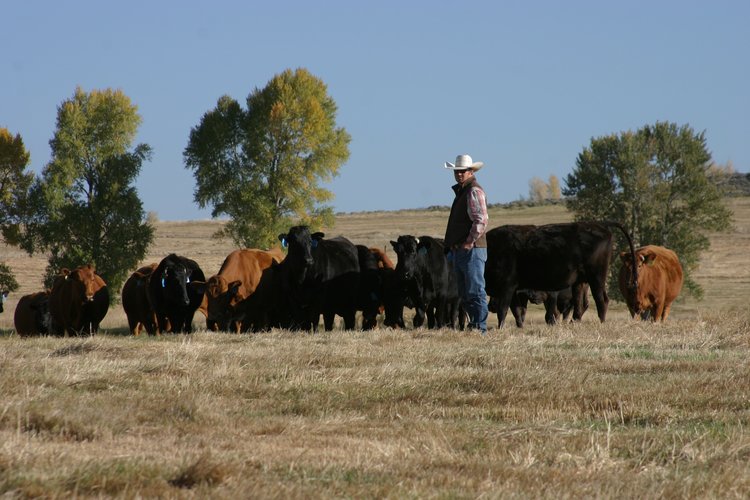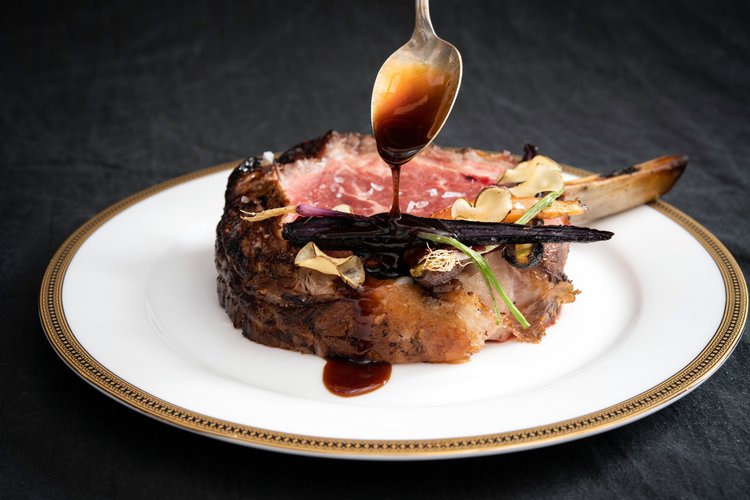Wyoming Wonders: Pureblood Wagyu Beef at Brush Creek Ranch
- Published In: Other News & Features
- Last Updated: Jun 07, 2022

By Amber Gibson
Special to the Wyoming Truth
Brush Creek Ranch is one of the most luxurious dude ranches in the United States, a sprawling 30,000-acre property adjacent to Medicine Bow National Forest, where guests experience the galloping life of a real cowboy while also being pampered with five-star service, cuisine and amenities. Outdoorsy travelers can go rock climbing, hunting and fly fishing or take an ATV tour before soothing sore muscles in luxurious spa treatments and sipping whiskey under the stars beside a roaring fire.

When it comes to dining at Brush Creek Ranch—recognized as one of the best hotels in the world by Conde Nast Traveler and Travel + Leisure—guests are well-advised to order beef at every meal: steak and eggs for breakfast, a burger for lunch and bone-in ribeye for dinner. The reason? All of the beef served on property come from the ranch’s own grass-fed herd—and they’re not your typical all-American angus.
The beautiful auburn and glossy black cattle meandering across the plain at Brush Creek Ranch are red Akaushi and black Tajima wagyu, two of the four Japanese heritage breeds categorized as wagyu by the American Wagyu Association. Less than 200 head of Japanese wagyu were imported to the United States between 1976 and the early 1990s, before Japan declared wagyu cattle a national treasure in 1997 and banned the exportation of live animals and genetics. Brush Creek Ranch purchased its wagyu in 2014 from direct descendants of this small gene pool, and the resort is now growing its nearly 200-cattle herd to produce high marbling genetics.
“Our beef is better for you than pork, chicken or even fish,” says ranch manager Ron Hawkins. “It’s because of [the cattle’s] genetics. There’s a gene that is in wagyu cattle that doesn’t exist in any other breed in the world, that creates this marbling and high oleic acid concentration.” Hawkins prefers the Tajima wagyu, with its super buttery texture, to the more beefy flavor of the Akaushi.
Hawkins raises the cattle entirely on grass and hay for 26 to 30 months, then sends the 1,700-pound animals to slaughter in Laramie, where they are finished on a diet of grain, including barley and roughage. He even visited Japan four years ago to learn more about the wagyu industry firsthand. Back in Wyoming, Hawkins tries to help the herd live a relaxed, stress-free life, to produce the highest quality meat. He and his team work slowly and quietly, moving the cattle between pastures on horseback without any barking dogs or machines. What’s more, they also under graze pastures, moving the cattle to new pastures when there is still ample grass left for grazing, so the cattle never compete for food.

In addition to dining on wagyu beef, guests at Brush Creek Ranch are offered butchery and grilling classes, where they learn how to break down different cuts of steak and use a variety of cooking techniques. At the Cheyenne Club, where seed-to-table fine dining gets a rugged Western twist, they can enjoy everything from beef kidney, liver and heart terrine to 60-day dry-aged bone-in ribeye.
“There’s a sweetness and umami flavor that you get in our beef,” says Drew Anderson, general manager of The Farm at Brush Creek Ranch. “And we’re training guests to taste those nuances in our meat – the flavor profile, minerality and texture in each cut. People don’t usually think about beef as having so many flavors. Our beef is special, and it’s very specific to our terroir that we have here, just like wine that you would get from Burgundy. There’s a flavor profile here that you don’t get with beef anywhere else in the country.”
Several times a year, fourth-generation butcher and chef Ken Kato spends a week at Brush Creek Ranch to train the kitchen staff on how to break down, age and prepare different cuts of meat. Kato works with Hawkins on the butchering and genetics side, and Anderson on the chef and restaurant side.

“[Ken] has been very involved training us in that Japanese style of getting the beef to the plate, the cooking, fabrication, different ways of utilizing different cuts of meat that we wouldn’t normally do here in the United States or even Europe,” explains Anderson. That might mean slicing shin bone super thin, shabu-shabu style, and lightly warming it through rather than braising it low and slow for osso bucco.
“We want to utilize as much of the animal as we possibly can,” Anderson adds. “I’ve been in the kitchen for 20 years, and I’ve been around this beef for as long as we’ve had it. But learning different cooking techniques and working with somebody from Japan has been a really incredible experience.”
There are twice as many cows as people in Wyoming, but Brush Creek Ranch’s world-class wagyu are a rarified wonder, a true taste of the Wild West and the right kind of hearty fare to fuel luxurious outdoor adventures.













